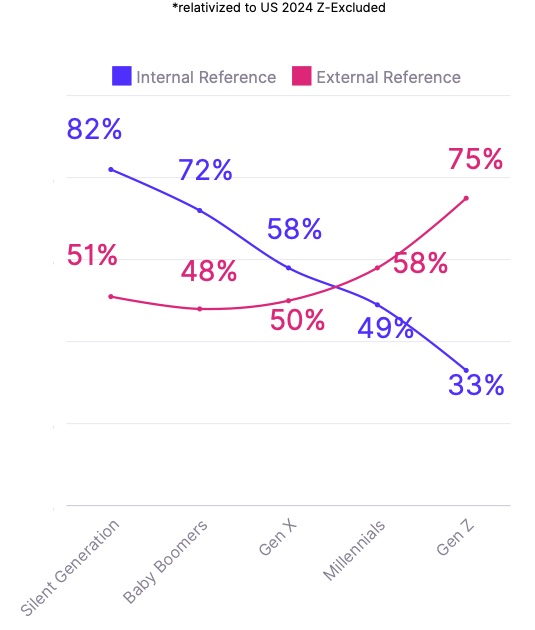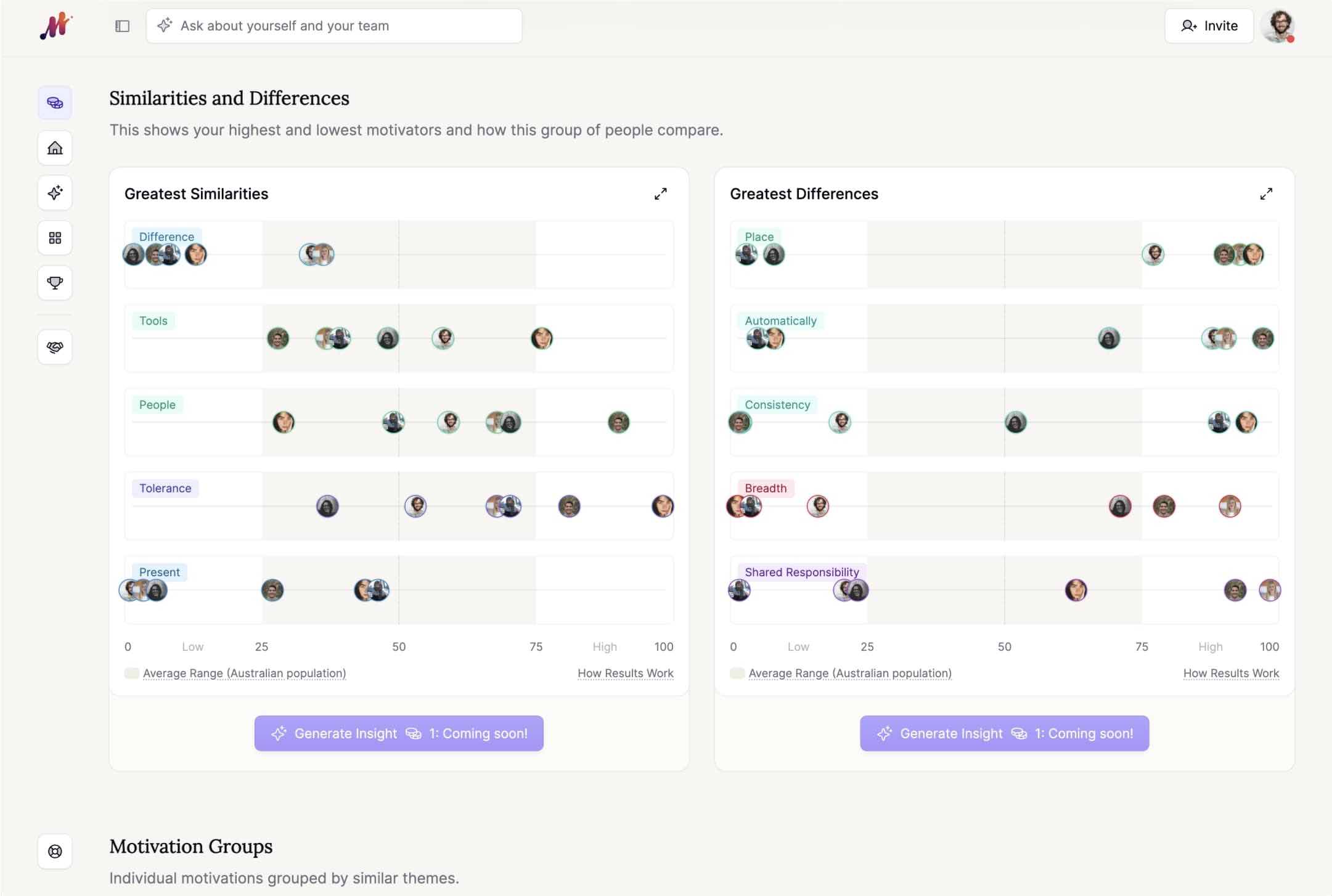Building teamwork that lasts: Boost trust and collaboration
Building teamwork starts with more than activities—it starts with understanding. This guide gives you the steps, strategies, and insights to create authentic connection, boost collaboration, and build a team culture that lasts.
- Author
Joanna Tovia

The engagement crisis: Why traditional teamwork strategies are falling short
Employee engagement has hit a sobering low. Only 31% of employees feel truly engaged at work in 2025 - the lowest level in a decade. Behind this statistic lies a deeper story about connection, or rather, its absence in today's workplace.
Think about your own team. Some members might be fully remote, others hybrid, and a few purely office-based. Maybe you've tried the standard team-building playbook—virtual happy hours, trust falls, or those infamous ‘get to know you’ games. But while these activities aim to spark connection, they often feel more awkward than effective.
You're not alone in this challenge. Our groundbreaking Gen Z at Work Study, analyzing data from more than 395,000 professionals globally, reveals something surprising: despite growing up in a digital world, younger generations show a strong preference for collaborative environments over solo work. They thrive in team settings where they can actively contribute to and learn from their colleagues. When these opportunities for meaningful collaboration are missing, the impact ripples through every aspect of work, from daily productivity to long-term retention.
Surface-level activities and ‘forced fun’ often miss the mark. They don’t build the kind of trust and teamwork that today’s teams really need. In a world where burnout rates are climbing and mental health concerns are at the forefront, we need to fundamentally rethink how we build bonds between team members.
But here's what's fascinating: the solution isn't about adding more team activities to everyone's already packed calendars. It's about understanding how different people naturally connect and collaborate and then creating environments where these connections can flourish authentically. When teams get this right, the transformation is remarkable - engagement soars, innovation flows more freely, and work becomes genuinely energizing rather than draining.
Let's explore how to make this transformation happen for your team.
6 Steps to building stronger teamwork
Step 1: Understand what makes a team successful
Before jumping into strategies, zoom out. Successful teams share a few key traits:
- They have a sense of autonomy
- They're aligned on purpose
- They foster honest communication
- They embrace diverse and complementary work styles
These are the traits that drive effective teamwork, especially in hybrid and fast-paced environments.
📖 Want to dive deeper? Read our blog: What makes a team successful
Step 2: Build deeper teamwork, not just surface-level connections
It's no longer about simply coordinating tasks or sharing project updates - today's teams need to forge meaningful connections across time zones, cultures, and work styles to truly thrive.
An Oxford study found that trust and psychological safety are at the heart of high-performing teams. Teams with strong interpersonal trust significantly outperform their peers. This trust-based advantage is even more critical in hybrid and virtual environments, where casual office interactions no longer happen organically.
But here's the challenge: not everyone connects and collaborates in the same way. Our research reveals fascinating generational differences in how people naturally work together. Gen Z shows a uniquely methodical and collaborative approach, preferring to gather diverse perspectives before moving forward. Baby Boomers and Gen X, on the other hand, often thrive on quick, intuitive decision-making and independent action.

Source: The Gen Z at Work Study
Without an intentional approach, these differences can create disconnects, particularly in remote settings. What works for one group may feel forced or ineffective for another. The key to strong teamwork isn’t about making everyone fit into the same mold—it’s about creating an environment where diverse work styles can naturally complement one another.
Take Sarah's team at a growing tech startup. Despite having highly talented individuals, collaboration felt forced, and energy was low. Through understanding each team member's natural work style, they discovered that while some thrived on spontaneous video chats, others needed time to process and preferred written communication. By adapting their collaboration approach to honor these differences, they saw engagement and productivity soar.
👉 If you're curious to understand the unique dynamics within your own team, Marlee's science-backed motivation assessment reveals exactly how different team members prefer to work and collaborate.
Step 3: Start a personalized team-building program
You don’t need to guess what makes your team tick—or rely on trial-and-error to figure out how to work better together. Our nine-week AI-powered team coaching program is designed to help you and your team discover how each person prefers to work, communicate, and collaborate. Together, you’ll uncover complementary strengths, boost motivation, and start making decisions faster, without sacrificing cohesion or energy.
You’ll co-create rituals that work for how your team is wired. The program supports:
- Accelerated team connection and bonding
- Clearer, more effective team communication
- Higher productivity and fulfillment across the team
- A noticeable lift in energy, motivation, and cohesion
- Faster team decision-making
👉 Ready to strengthen your team in a way that lasts? Start our Team Building coaching program.
Step 4: Build your team for People-Project Fit
Strong teamwork doesn’t just happen—it’s built with clarity and care. One of the most overlooked drivers of success? People-Project Fit. That means understanding your team well enough to match individuals to the projects and teams where they’ll thrive.
Building a successful team isn’t just about hiring talented people. It’s about:
- Hiring intentionally for values and strengths
- Managing to the one, not the many—what motivates one teammate may not inspire another
- Taking time to understand each team member’s capabilities, preferences, and aspirations
When people feel aligned to their work—and the team around them—they perform at their best.
📖 Dive deeper: How to build a successful team
Step 5: Develop the right team-building skills
Long-lasting teamwork starts with the right skills. Focus on developing the abilities that foster trust, collaboration, and motivation.
Here are a few foundational skills to nurture:
- Emotional intelligence
- Conflict resolution
- Active listening
- Initiative and leadership
📖 Explore the full list in our blog: Essential team-building skills for better performance
Step 6: Use personalized team-building exercises
Once you understand what energizes each team member, you can design team building activities that feel natural and fun—not forced.
Here’s a curated list to get started:
- Quick wins (5–10 mins): Perfect for fast-paced teams and daily meetings → Quick team building activities
- Remote and hybrid fun: Great for building connections across time zones → Fun team-building activities for remote or hybrid teams
- Creative icebreakers: Perfect for warming up before meetings or brainstorming → Team building icebreakers
These activities become significantly more impactful when tailored to each team member’s unique motivators—whether that’s visual learning, structure, or hands-on engagement.
Building teamwork that lasts: Why personalization matters
Understanding how your team naturally connects is the foundation for building meaningful relationships that drive results. Every team has a unique rhythm—some thrive in fast-paced brainstorming sessions, while others perform best with structured problem-solving. Recognizing these differences is the first step toward creating an environment where collaboration feels authentic rather than forced.
Here’s how work styles impact team dynamics:
- Group vs solo work: Some team members are energized by social interaction, while others need uninterrupted focus time
- Communication preferences: Some absorb information best through reading and writing, others through speaking and listening
- Decision-making styles: Some are motivated to gather diverse perspectives before deciding, others trust their internal compass
- Problem-solving approaches: Some are energized by identifying and preventing potential issues, others by chasing ambitious goals
Observing these patterns can provide valuable insight, but for a deeper understanding, Marlee’s motivation assessment precisely identifies what energizes each team member.
When leaders align team-building efforts with natural work styles, engagement and innovation thrive.

A Marlee team space showing similarities and differences in work styles
👉 How to run a team dynamics workshop
From one-off activities to a teamwork culture
Building teamwork is about shaping a culture where everyone feels seen, supported, and empowered to contribute in ways that energize them. That kind of culture starts with leadership.
When leaders embrace individual work styles and stay flexible in how teams connect, collaboration becomes more natural, trust runs deeper, and momentum builds. The result? A team that thrives—not by chance, but by design.
🚀 Ready to unlock deeper connection and collaboration? Start for free with Marlee and explore how personalized insights can help your team grow stronger—together.


